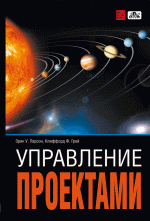
|
||
ÍîâîñòèEfficiency of information system17.05.2011 Dzuba S.À., Doctor of Science, Irkutsk State Technical University,
Usually when we talk about evolution of a company we link progressive nature of this evolution to growth of the company. In this case a company can effectively use the economies of scale which decrease the marginal costs as unification and standardization can make operations automatic. This relates not only to the production functions but also the routine procedures of calculation and control. No wonder that information system (IS), as a tool for their automatization, is expected to bring the same advantages as those that can be provided, for example, by a textile machine or a steam-engine. But it is long time since it was found that economy of management labour as expected direct effect often manifests itself rather weakly in contrast to implicit effect on general improvement of management. The latter can not be assessed consistently. Nevertheless according to all methodic guidelines for evaluation of efficiency of IS it is recommended to calculate economical benefits and compare them with costs of implementation and usage of this IS. Absence of any other methodic alternatives makes us to turn to this method over and over again, though it is based on input data which can not be reliable from the very beginning of calculation. Let’s have another look on this problem. Will any company analyze necessity of providing office with telephonic communication or evaluate economical efficiency of such decision? If it is not bureaucratic to very high extent it will not. Need for telephones is obvious without any analysis and the benefits obtained from telephonic system exceed the costs of its installation and maintenance endlessly providing that personnel’s work is connected with constant message exchange between each other and third parties. Can we say that any way of organization of telephonic communications will be equally effective? No, we can not. Let us consider three typical schemes:
The first variant looks like the most “luxurious”. But the employees will have to memorize very many numbers and constantly use indoor telephone directory. If the necessary employee is not at his place a caller which needs to transmit the message will have to wait until he comes back or to make another call to his neighbor (a caller needs to know this number or make enquiry about it). The employee’s neighbor may not be at his place as well. And so on. In the third variant it will take a lot of time and efforts to make a call to the necessary employee because a caller will have to listen to the music and every time explain to a receptionist who he is and what he needs. The existence of costs of market regulation which classic economic theory does not take into account was mentioned by Ronald Coase in the work “The Nature of the Firm”. He started to take into account transaction costs which can be seen as economical “friction force” originated in the process of coordination of interaction circumstances between economic agents. Companies exist because the volume of such coordination inside them is lower than in external market environment. But this can not last all the time: in this case the companies as a way to allocate economical resources inevitably would have taken the place of the market but it does not happen in reality. The reason for that, as R. Coase mentioned, prohibition-like forward-looking increase in transaction costs inside the company which follow the growth of the company. Further the “prohibition of Coase” takes place which means stopping of company growth as a result. Coase did not explain the principle of its action but he pointed out that it can be smoothened by improvement of management of the company. It is rather strange that in reference internet resources this law was transformed into very alike and similar in sounding but absolutely false in its contents statement which is sometimes cited as Ashby’s words: “To make the management of the system possible the variety of managing actions must not be less than variety of agitation at the entrance into the system”. Of course Ashby could not say such nonsense and actually did not because in such a form the law let the possibility of achieving the negative variety by the system and this breaks the second law of thermodynamics (principle of entropy increase). These statements as well as the methods for evaluation of efficiency of IS and their theoretical base are represented more rigorously in the articles “Efficiency of management system: information approach” and “Efficiency and costs of information system: theory and practice” published in the magazine “Management in Russia and Abroad”. |
||
| |
||
| Âñå ïðàâà ïðèíàäëåæàò Èçäàòåëüñòâó «Ôèíïðåññ» | Ïîëíîå èëè ÷àñòè÷íîå âîñïðîèçâåäåíèå èëè ðàçìíîæåíèå êàêèì-ëèáî ñïîñîáîì ìàòåðèàëîâ äîïóñêàåòñÿ òîëüêî ñ ïèñüìåííîãî ðàçðåøåíèÿ Èçäàòåëüñòâà «Ôèíïðåññ». | |
